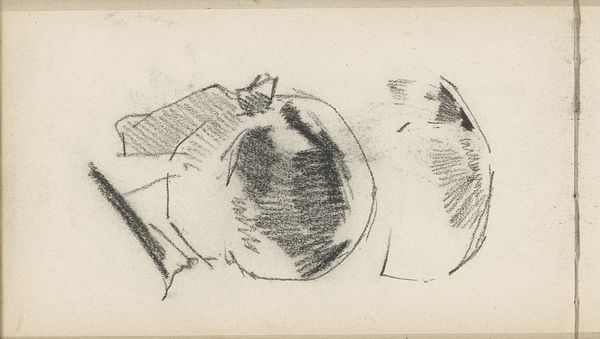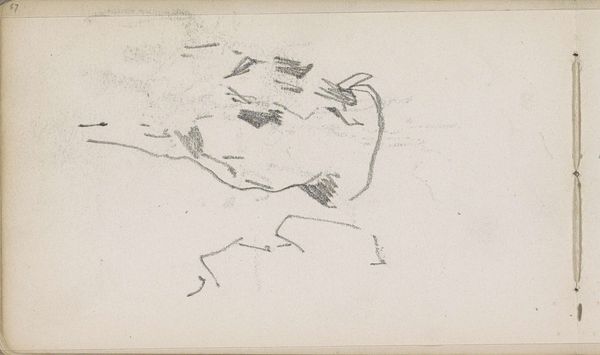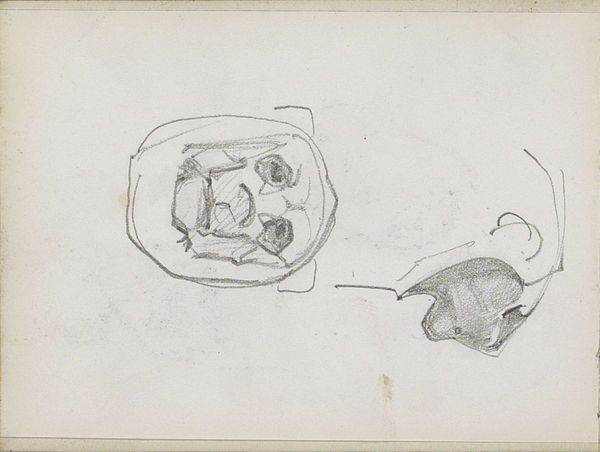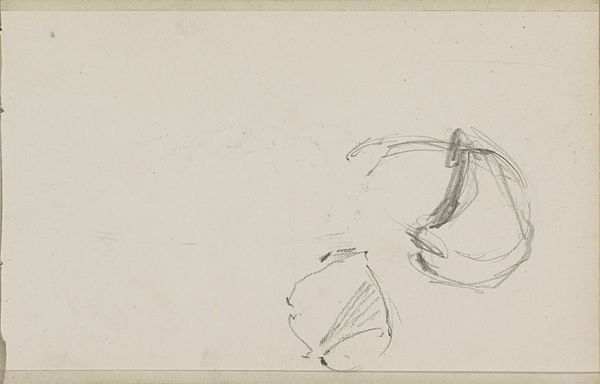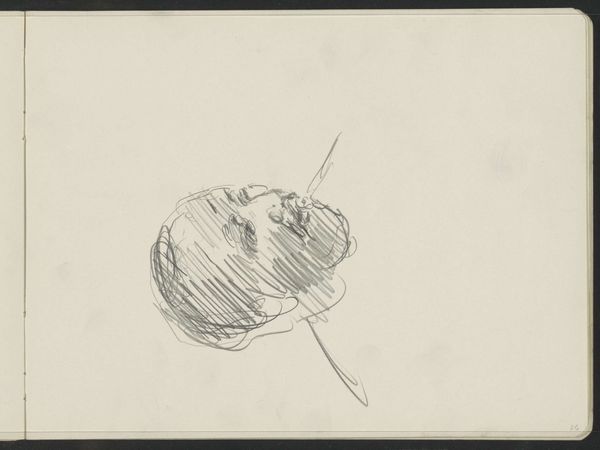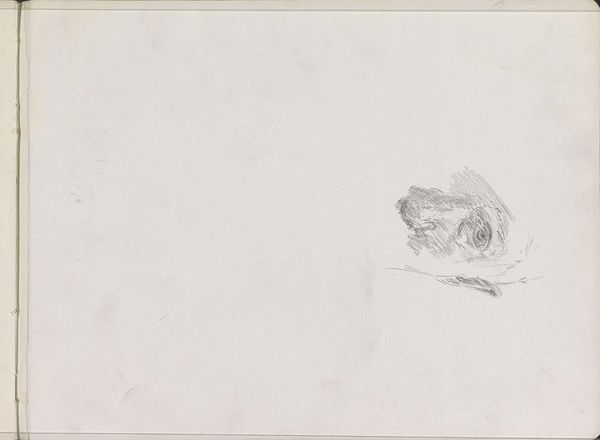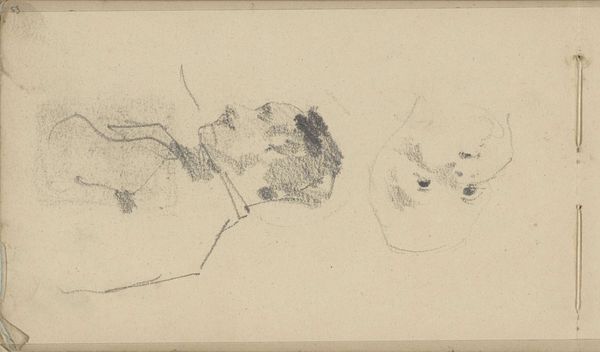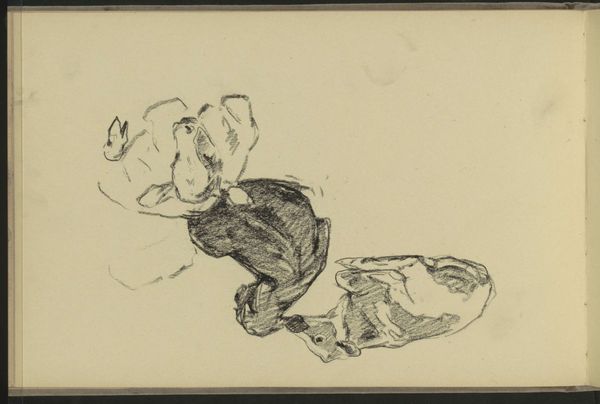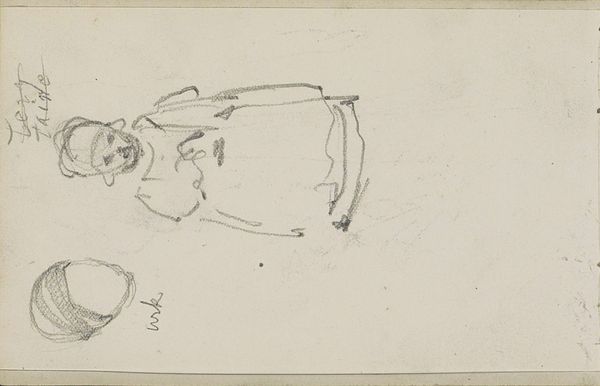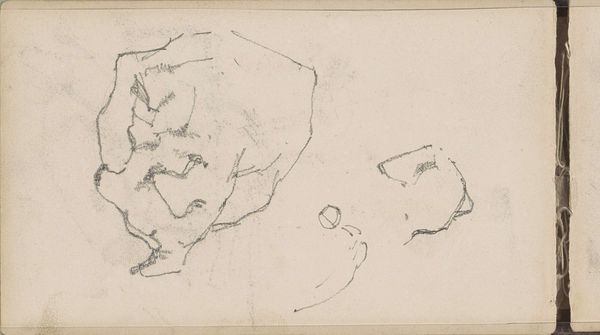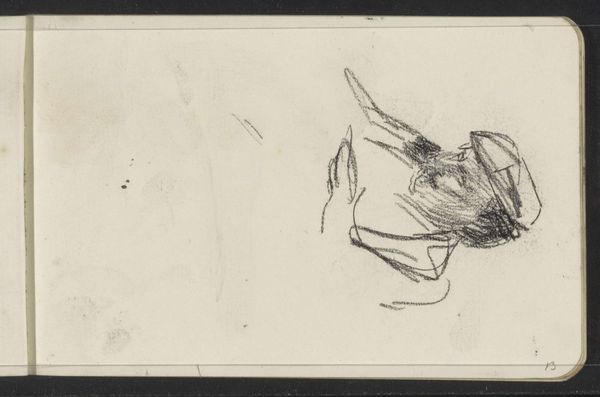
drawing, pencil
#
portrait
#
drawing
#
animal
#
impressionism
#
pen sketch
#
pencil sketch
#
pencil
Copyright: Rijks Museum: Open Domain
Curator: This little drawing is called "Liggende kat," or "Reclining Cat," dating back to somewhere between 1886 and 1891, by George Hendrik Breitner. It resides here at the Rijksmuseum. Editor: My first thought? Utter contentment. Just pure, feline bliss captured in pencil. Look at that curled-up form, so compact and cozy. It's as if Breitner caught this creature in its most unguarded moment of repose. Curator: Breitner was known for capturing fleeting moments, wasn’t he? Not just grand portraits, but also intimate sketches of everyday life in Amsterdam. This quick study, probably done in pencil, fits right in. I wonder, was it a house cat he observed, or maybe a stray he found dozing in an alleyway? Editor: That pencil work… see how the hatching creates form? There's an efficiency to it. He’s not fussing over details; it's about capturing the essence of “cat-ness”. I'd love to know the graphite grade of that pencil and see if he sourced his papers locally. Were these readily available mass produced or specialized for artist sketchbooks at the time? Those material realities are crucial. Curator: He definitely seemed to prefer capturing impressions over detailed representation, which firmly plants him in the camp of Impressionism, doesn’t it? But I see that point about "cat-ness". It transcends mere likeness. It becomes a universal symbol of domestic tranquility. I bet anyone who’s ever owned a cat can instantly relate to this image. Editor: Absolutely. And what about the support of labor embedded in that seemingly simple pencil? Miners extracting graphite, factory workers manufacturing pencils... It links high art to everyday commodities. Plus, the composition: that implied circle—a safe space. Did that formal decision come naturally, or did he deliberate? Curator: I wonder if, through his artistic labor and by documenting ordinary cats, Breitner also unconsciously elevated these creatures from the realm of domestic pets to the art historical world? Editor: Precisely! He is turning a quotidian experience into something we value and study centuries later. That says something potent about labor, consumption, and the art historical canon itself. Curator: Exactly. So, here's to the quiet power of a reclining cat, immortalized in pencil. A lovely observation point. Editor: Indeed. Makes you think about all the invisible labor and systems behind a simple sketch.
Comments
No comments
Be the first to comment and join the conversation on the ultimate creative platform.


